Sanjay Kumar, a man in his late sixties, lies in the ICU of Holy Heart Hospital in Rohtak, Haryana. Just days ago, he underwent a life-saving angioplasty where two stents were placed in his heart. What would have been an overwhelming financial burden, with the procedure costing around lakhs of rupees, was completely covered by the Ayushman Bharat card—India’s flagship health insurance scheme. For Sanjay and his family, this was nothing short of a miracle. Only a day before his surgery, he got his Ayushman Bharat card, and now every member of his family holds one.
Speaking with Organiser, Sanjay’s son shared, “We have always relied on government hospitals because private hospitals were never an option for us. But when the doctors suggested we go to a bigger hospital for his treatment, we were terrified of the cost. The Ayushman Bharat card was our lifeline. Without it, I don’t think my father would have made it through.”
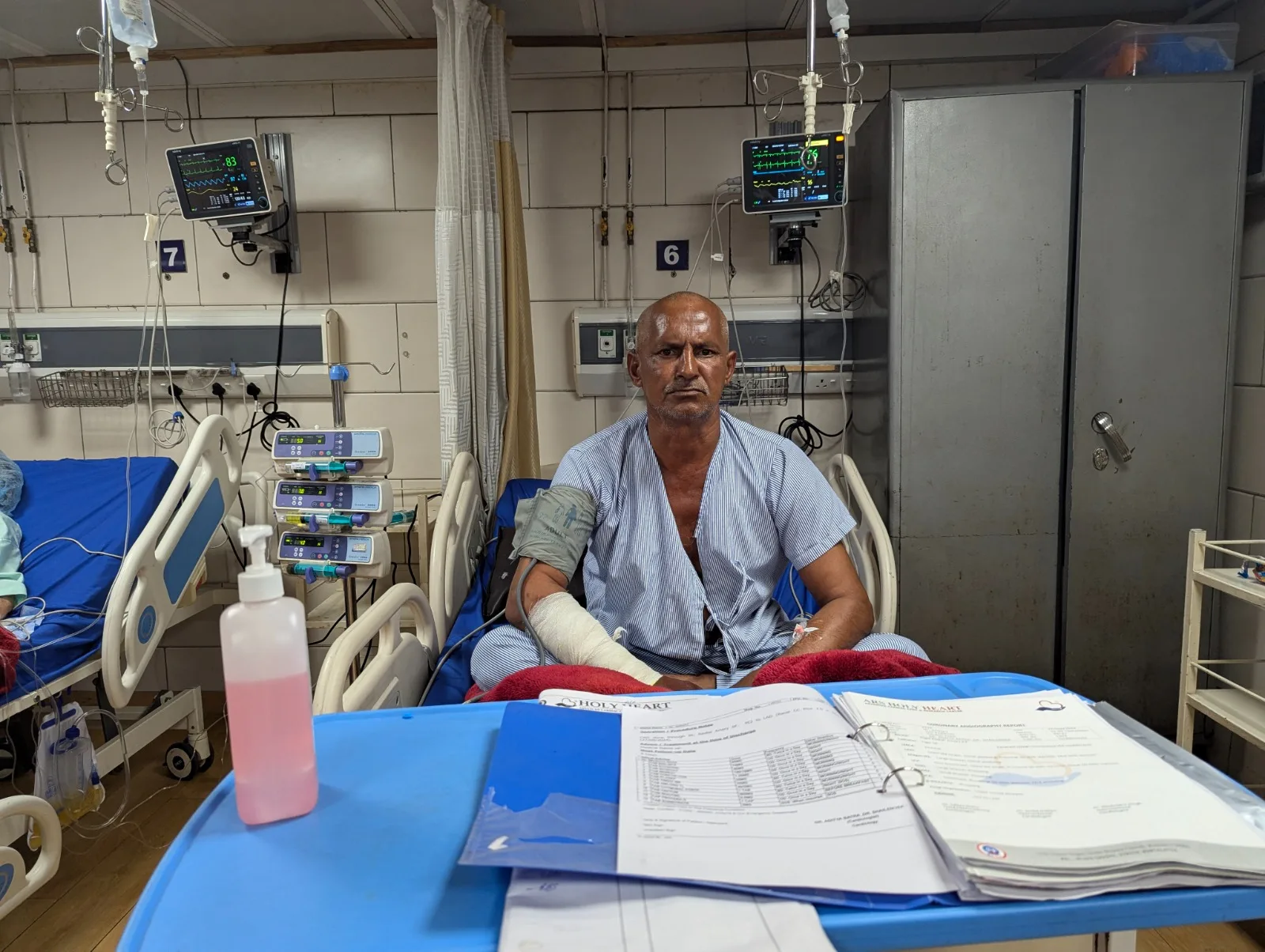
Kartik T.P., an administrator at Holy Heart Hospital, reflected on the impact of the scheme. “Since 2018, we have treated 2,209 patients under Ayushman Bharat. In August 2024 alone, 106 patients came in, and by September, 93 more. Every day, we see 4-5 patients benefitting from this scheme, with common procedures like angiographies, stent placements, pacemakers, and more.”
The situation is similar at Nobel Heart Hospital, where the Organiser learned that 1,103 patients have been treated under the scheme since its inception. In August alone, 144 patients were treated, and by September, another 130. Most of the patients here require stent placements or pacemaker procedures, vital treatments that would otherwise be unaffordable for many.
Organiser also met Seema (name changed), another heart patient who underwent surgery, with all her medical bills covered by the Ayushman Bharat card. While visiting the hospital, a new patient was admitted after a minor heart attack. He had a blockage in her heart, and his family was relieved to learn that the surgery would be fully covered under the scheme.
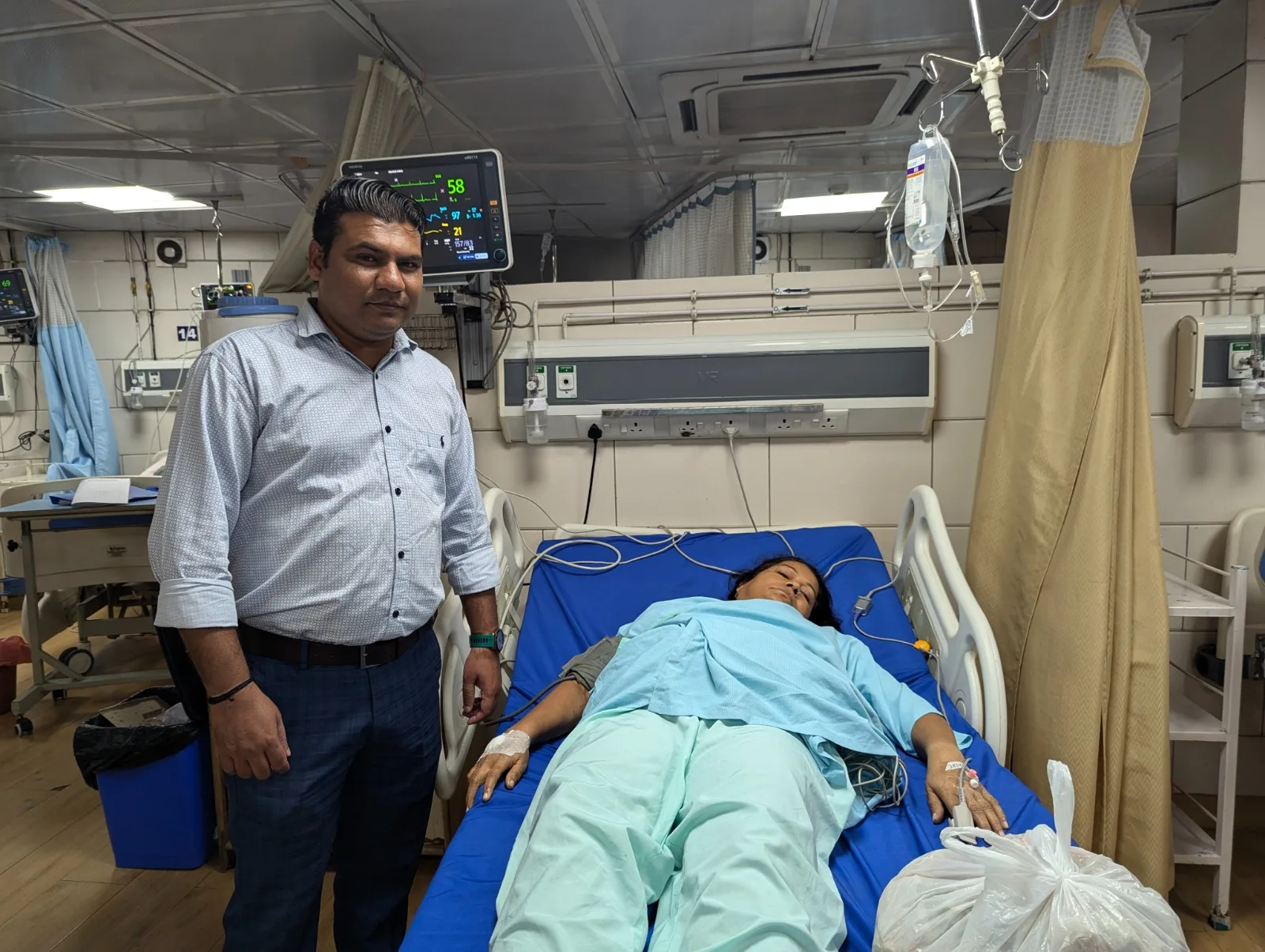
Ayushman Bharat, launched in September 2018, provides health insurance coverage of up to Rs 5 lakh per family per year. Under this scheme, 60 per cent of the cost is borne by the central government, while 40 per cent is covered by the state. The scheme has transformed healthcare access, especially for the underprivileged, by including private hospitals in its network. Over 35 crore beneficiaries have availed treatment, with nearly 14,000 private hospitals across India empanelled under the scheme.
In Haryana alone, over 1,000 private hospitals participate, with Hisar leading the state with 156 private facilities. The scheme’s success is evident, not just in numbers but in the lives it touches every day.
Seema’s son, visibly emotional, shared his thoughts: “In the ICU alone, out of 15 patients, 7 are being treated under Ayushman Bharat. Without this scheme, many wouldn’t even dream of coming here. My mother is receiving the same care as any other private patient, and that means everything to us.” He added, “Last month, my father had a kidney procedure, and now he’s on dialysis, also covered by the card. If it weren’t for Ayushman Bharat, we would never have thought of entering a private hospital.”
He continued with a heavy heart, “These rounds of dialysis and her admission here would have been unbearably expensive. We used to go to local doctors because we were afraid of private hospital costs. But with this card, we didn’t have to worry about that anymore.”
The cost of an angioplasty stent in India can range between Rs 40,000 and Rs 1,00,000, depending on the type of stent and the location. For families like Sanjay’s and Seema’s, these amounts are far beyond reach. Yet, thanks to Ayushman Bharat, they were able to receive life-saving treatments without any financial strain, bringing hope and healing to countless families across the country.
At both Nobel and Holy Heart hospitals, the costs for life-saving heart procedures such as stent placements range between Rs 40,000 to Rs 70,000. The rates for rooms, however, add another layer of financial strain. A general ward bed costs Rs 3,500 per day, while private rooms without air conditioning cost Rs 5,500, and those with air conditioning rise to Rs 6,500. For patients requiring ventilators or critical care, the charges shoot up to Rs 7,000 and Rs 10,500 per day, respectively. Ordinarily, families would have to bear these expenses alongside the procedure itself, which could easily exceed Rs 1 lakh. But for those covered by the Ayushman Bharat scheme, these costs are fully taken care of.
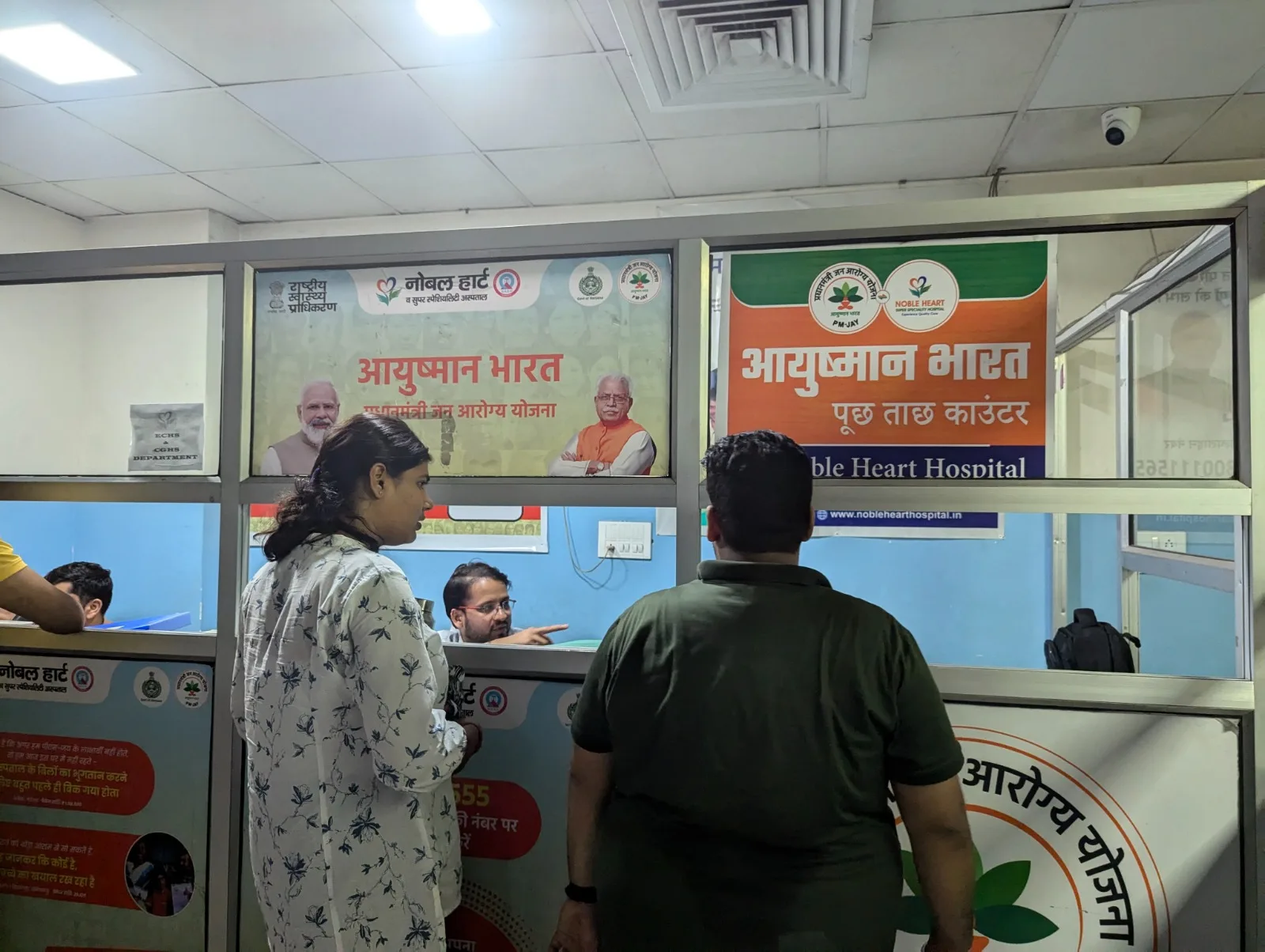
Kartik, at Holy Heart Hospital, spoke about the scheme’s enforcement: “If any private hospital refuses to cover a patient under Ayushman Bharat, the patient has the right to report the issue to the medical board. The hospital can then face penalties in lakhs. We are required to comply with the scheme, so we make sure to provide the necessary treatment.” Regarding payments, he added, “There’s a window of 15 days within which we apply for reimbursements. Sometimes, payments are cleared promptly, but delays of two to three months do happen. Regardless, we continue to provide the service because the scheme is a commitment.”
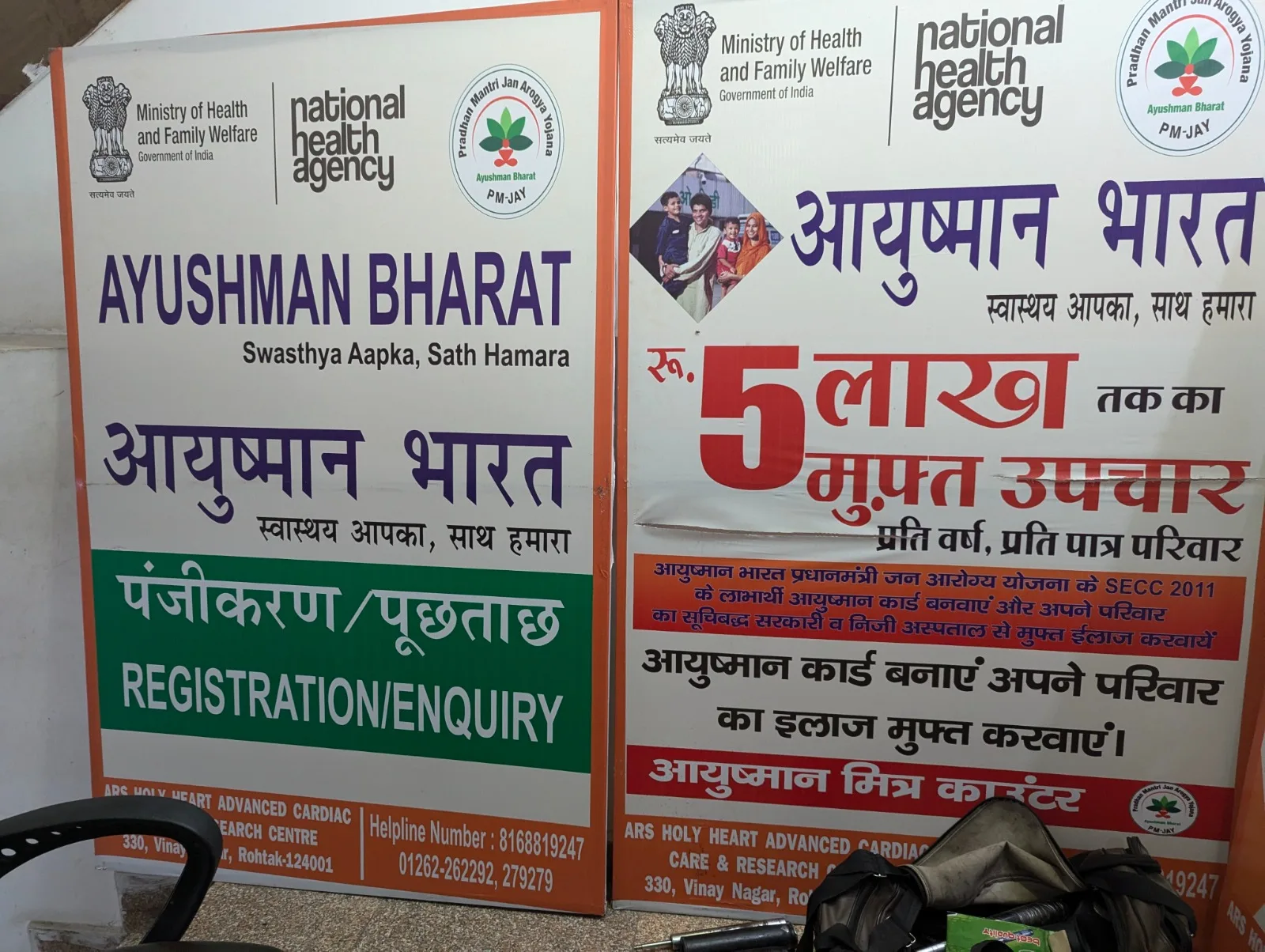
The growing demand for free treatment is not limited to private hospitals. Government facilities like the Pandit Bhagwat Dayal Sharma Post Graduate Institute of Medical Sciences (PGIMS) in Rohtak are also seeing increased numbers of patients relying on the Ayushman Bharat card. During a visit to the hospital, the Organiser team encountered a patient who had been waiting at the Ayushman Bharat desk for discharge papers. His brother had been in an accident, and all the medical bills were covered under the scheme. However, it was already 11:30 AM, and the desk in charge had yet to arrive.
After hours of waiting and tracking down various officials, including the Medical Superintendent, Kundan Mittal, the Organiser team still struggled to access the information about how many patients had benefitted from the scheme at PGIMS. Despite Mittal’s efforts to connect us with the right authority, it took several days and much back-and-forth. As of October 4, no official response had been received regarding the total number of beneficiaries from the hospital.
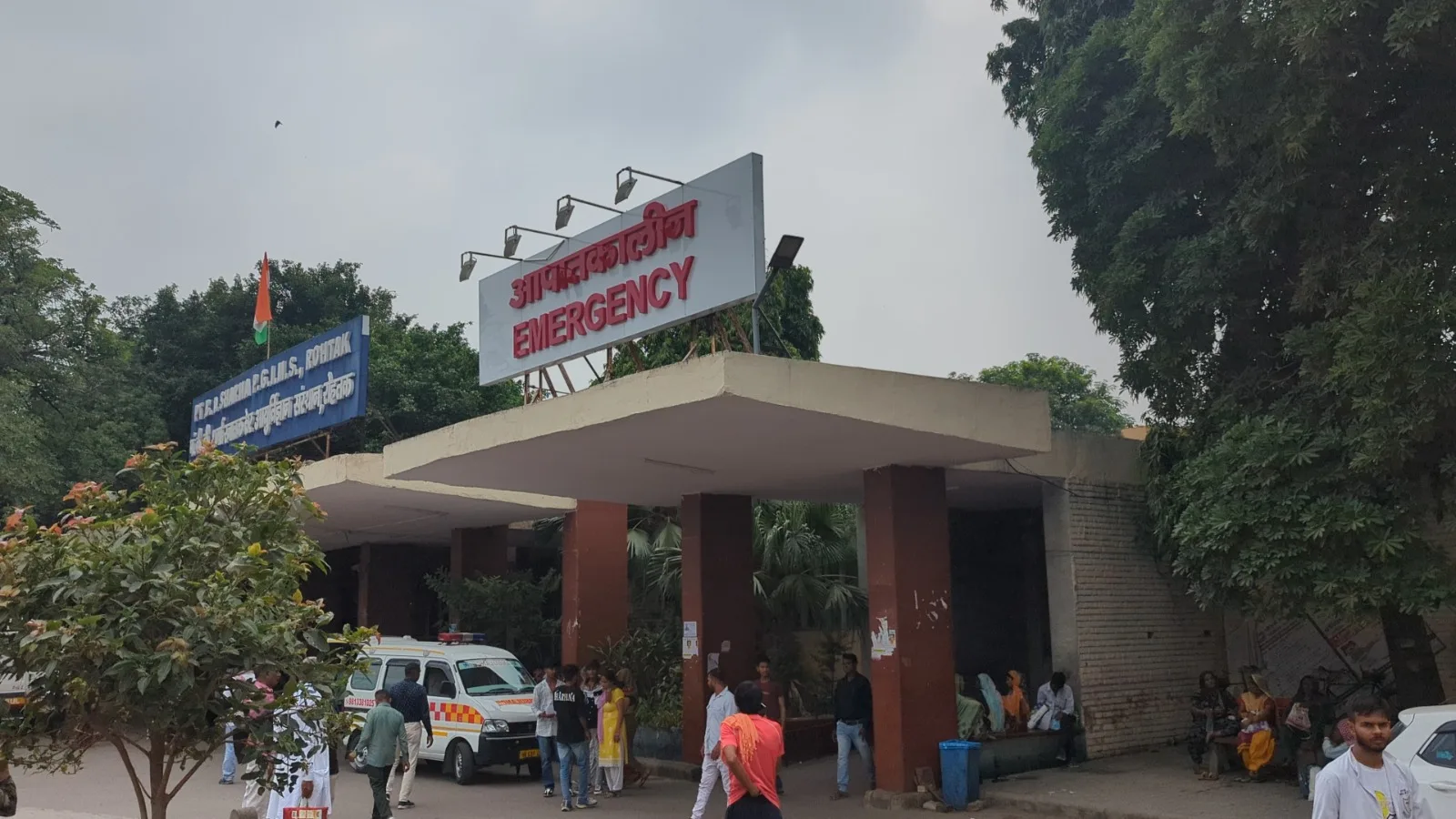
Nevertheless, Organiser managed to obtain some state-wide data. In Rohtak alone, a total of 5,78,708 people have benefitted from the Ayushman Bharat scheme. Across Haryana, both private and government hospitals are seeing a surge in patients since the Haryana government expanded the income eligibility limit under the Ayushman Bharat-Chirayu Haryana Yojana in August 2023.
This expansion, which now covers families earning up to Rs 3 lakh annually, has opened up free healthcare access to a much larger population. However, it has also placed considerable pressure on the state’s healthcare infrastructure and finances.
Kartik elaborated, “The scheme was designed for families with an annual income below Rs 1.2 lakh, but with the increase to Rs 3 lakh, the number of patients has dramatically surged. We’re seeing more people come in for procedures they couldn’t afford earlier, and this puts a strain on hospitals, especially since the state government now bears 100 per cent of the cost under the Chirayu scheme.”
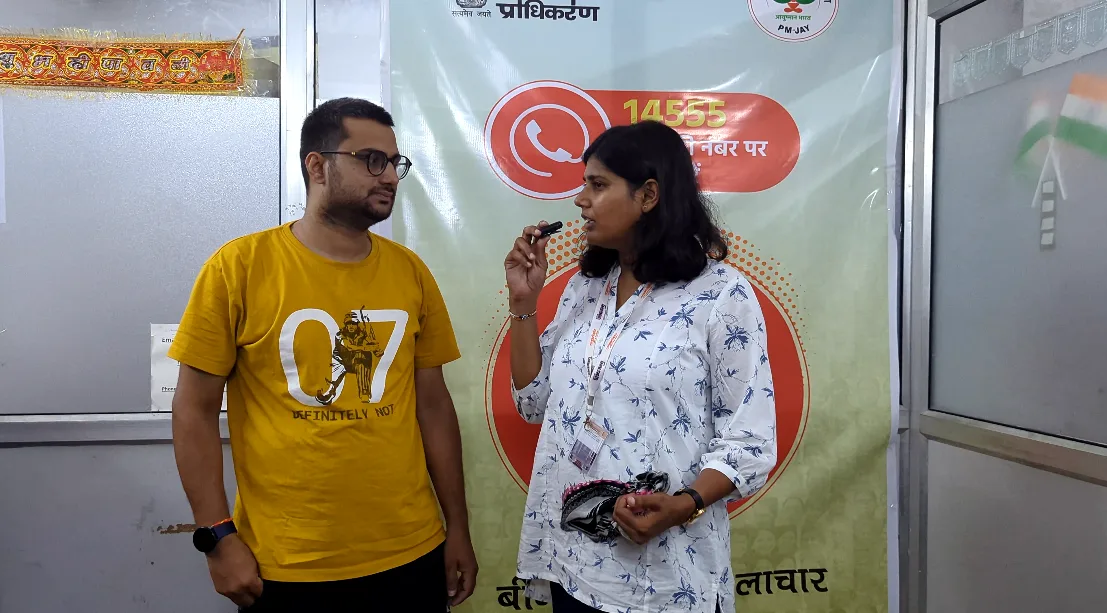
Despite the financial pressures, the state’s commitment to extending healthcare is evident. Since the Chirayu Haryana Yojana was introduced, nearly 1.03 crore Ayushman-Chirayu cards have been issued across the state. This includes 74.33 lakh Chirayu cards and 28.89 lakh Ayushman Bharat cards. The broader coverage means that nearly half of Haryana’s population is now eligible for free medical treatment at both government and private hospitals.
The scheme’s impact on families is profound. One patient’s relative at Holy Heart Hospital shared, “Without this card, we couldn’t have afforded this kind of treatment. My mother had a blockage in her heart, and the surgery alone would have cost more than we could ever pay. Thanks to the Ayushman Bharat card, she got the same care as a private patient.”
Another family member at Nobel Heart Hospital said, “Three days in the ICU, then room charges, procedure costs—it all adds up. But with the card, we didn’t have to think twice about coming here for help. We used to only visit local clinics, scared of the costs. Now we know we can get proper treatment when we need it.”
The financial contrast is striking. While the cost of an angioplasty stent in India typically falls in high ranges, the Ayushman Bharat scheme ensures that this burden doesn’t fall on families. For patients who would otherwise never have considered stepping into a private hospital, this scheme has been a lifesaver—both in the literal and financial sense.
Despite the challenges in payment delays and the financial strain on hospitals, the scheme continues to serve its purpose of providing quality healthcare to India’s underprivileged.
The Ayushman Bharat scheme has transformed lives in Haryana, providing critical healthcare access to families who previously could not afford it. For families like Sanjay’s and Seema’s, it has been a lifeline, offering hope and financial relief when they needed it most.


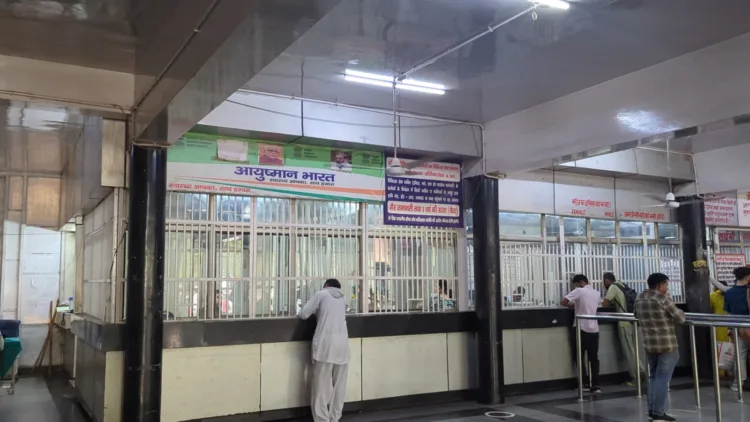
















Comments